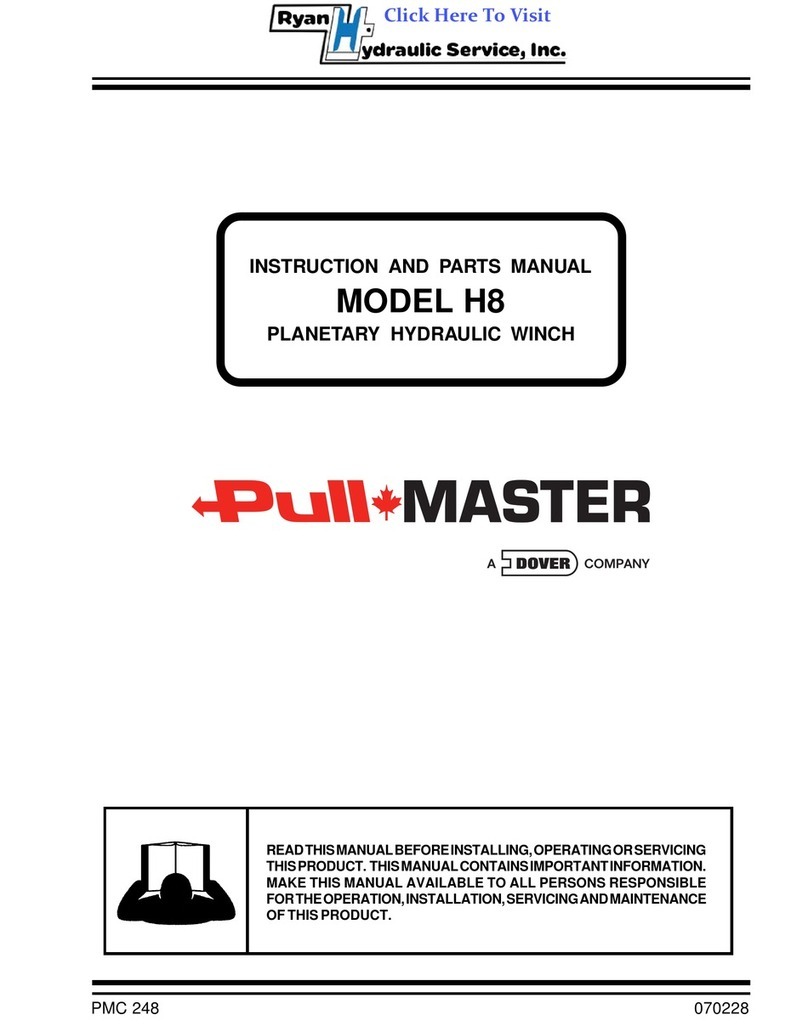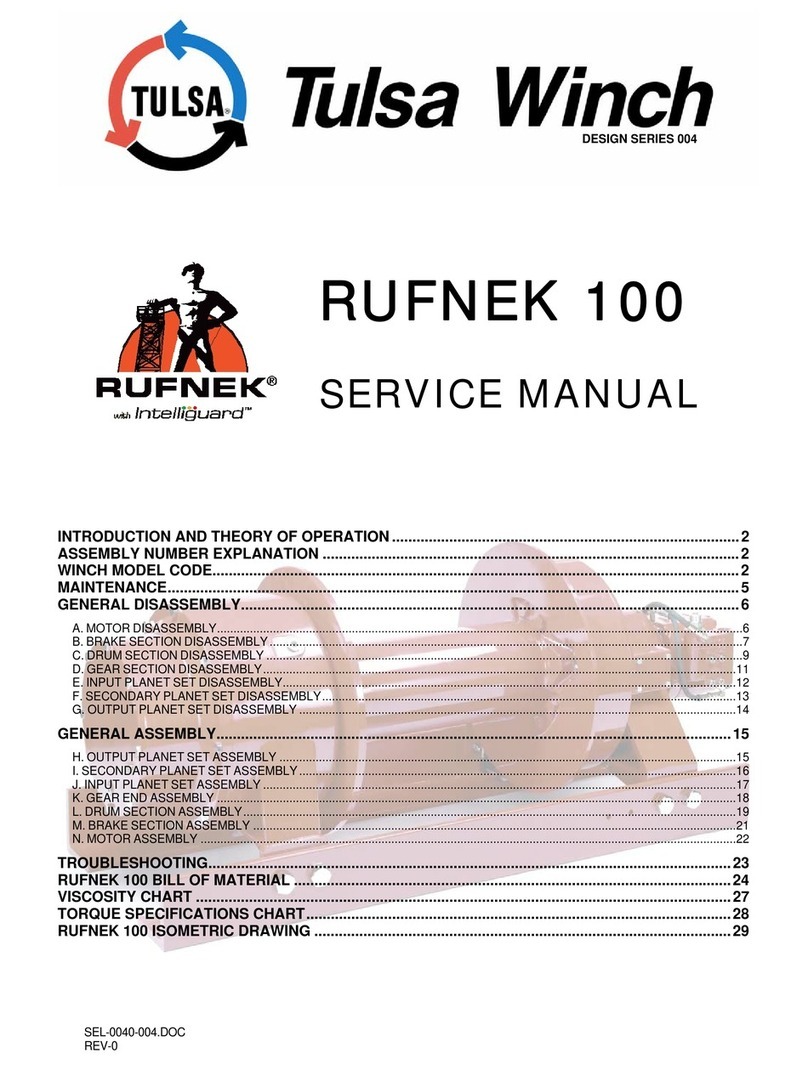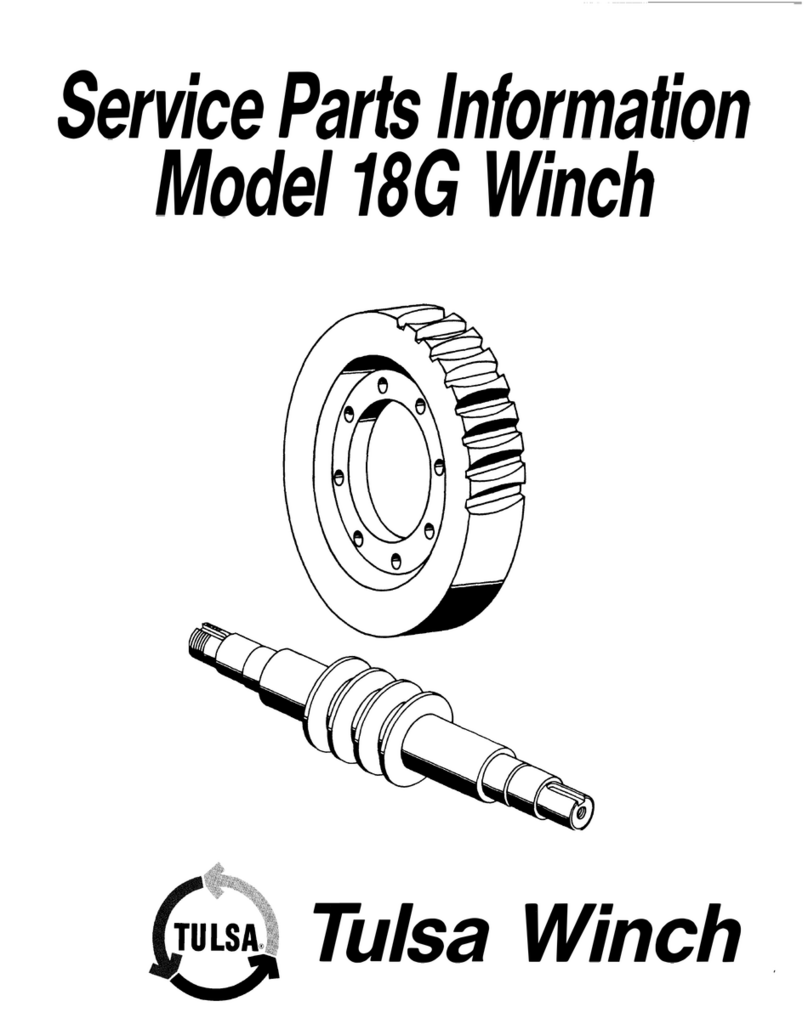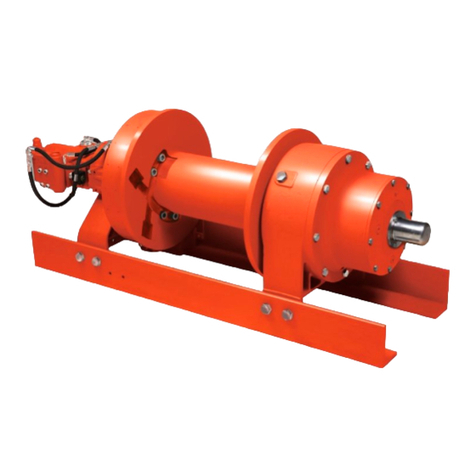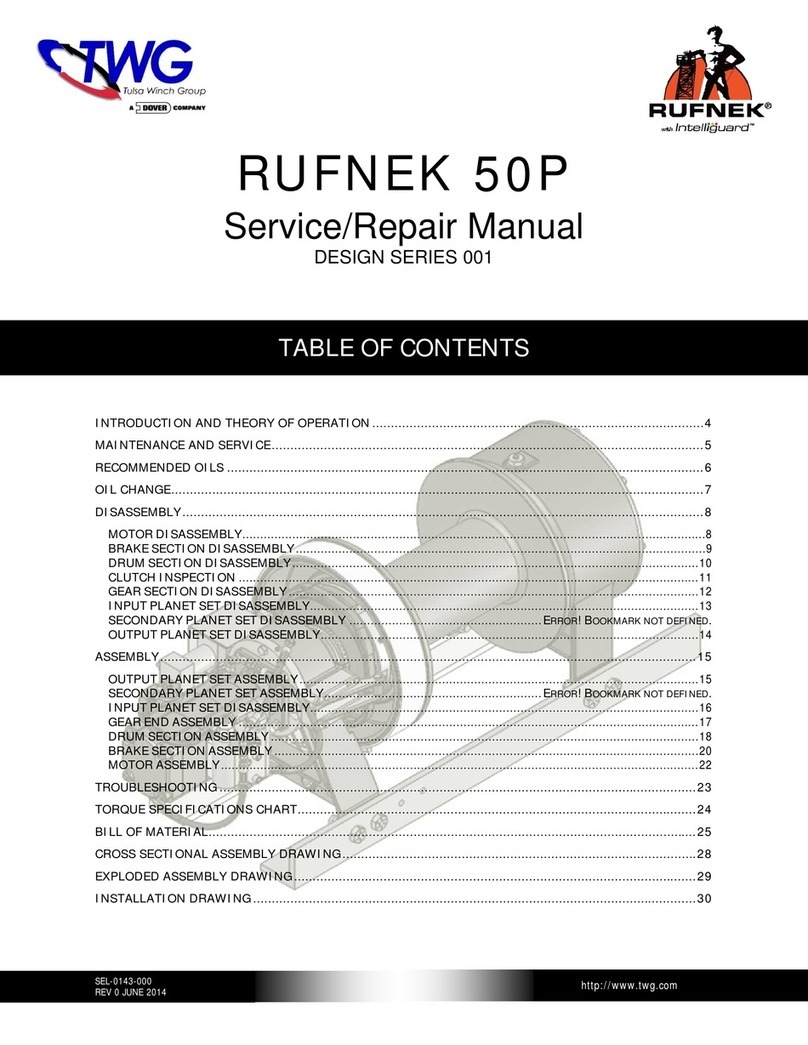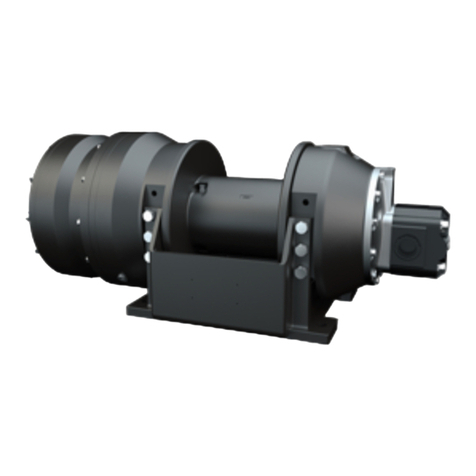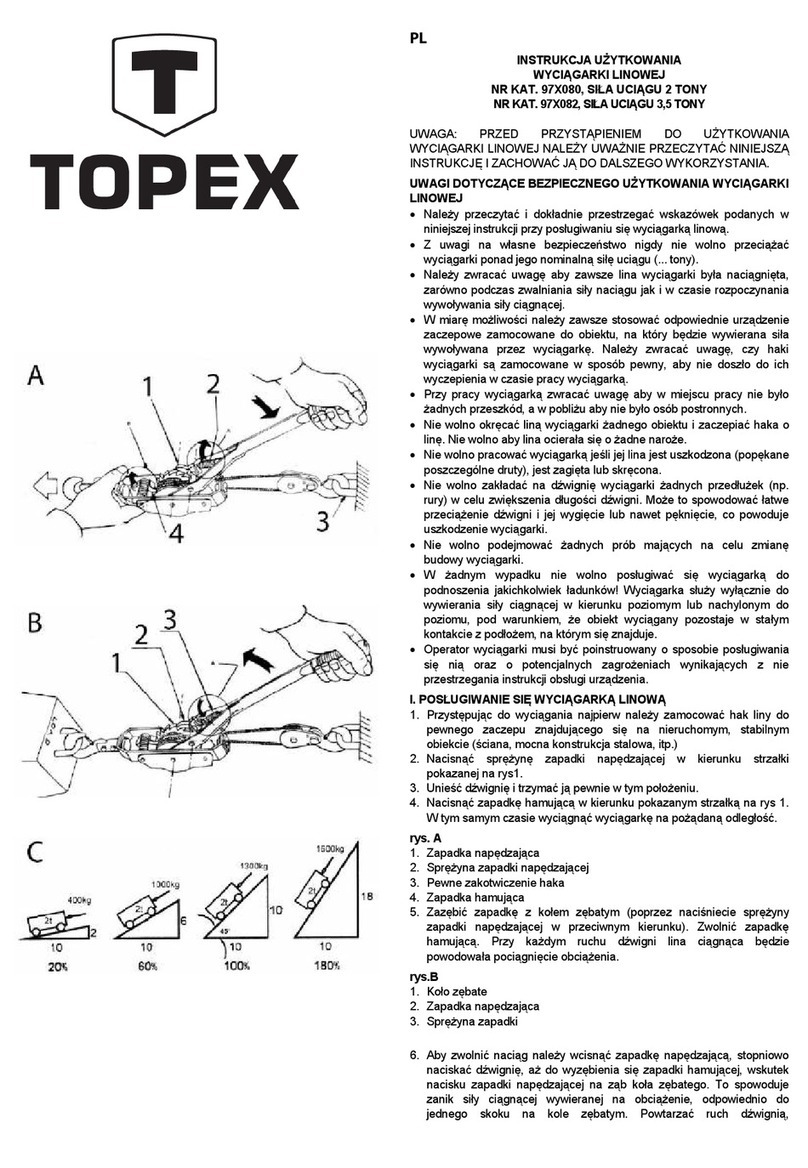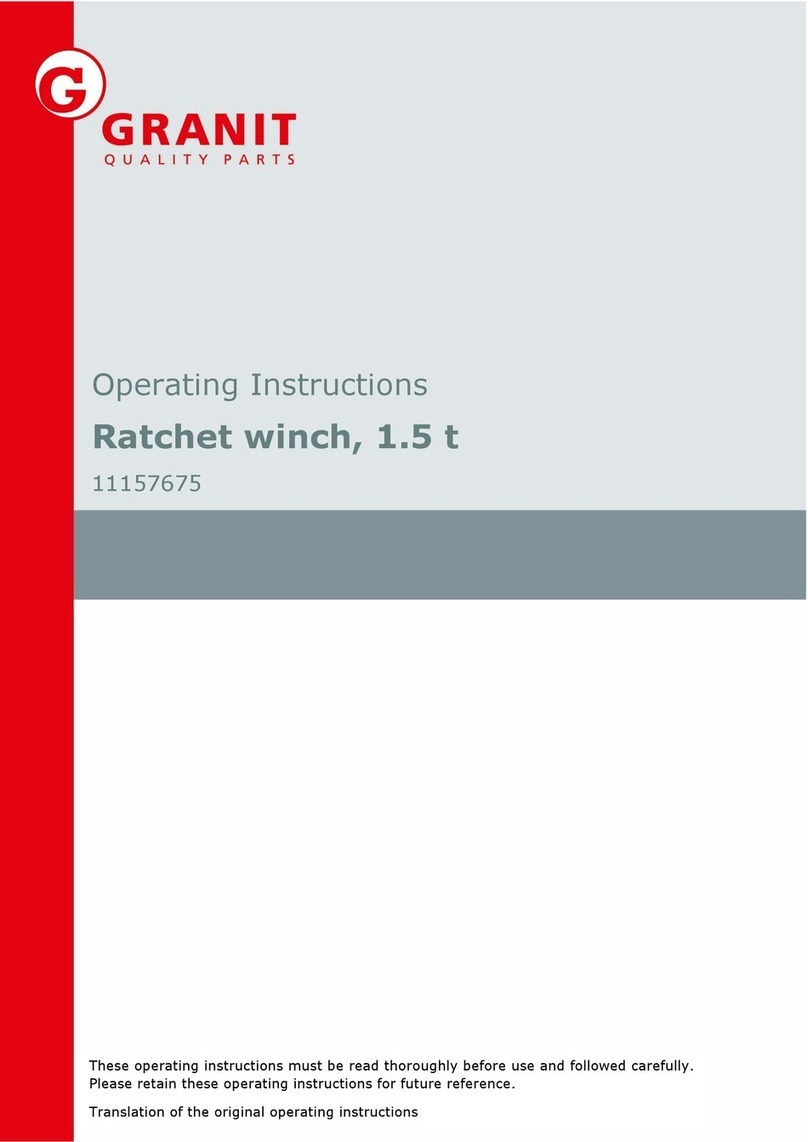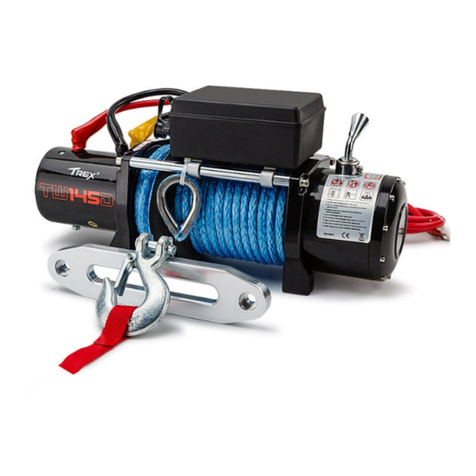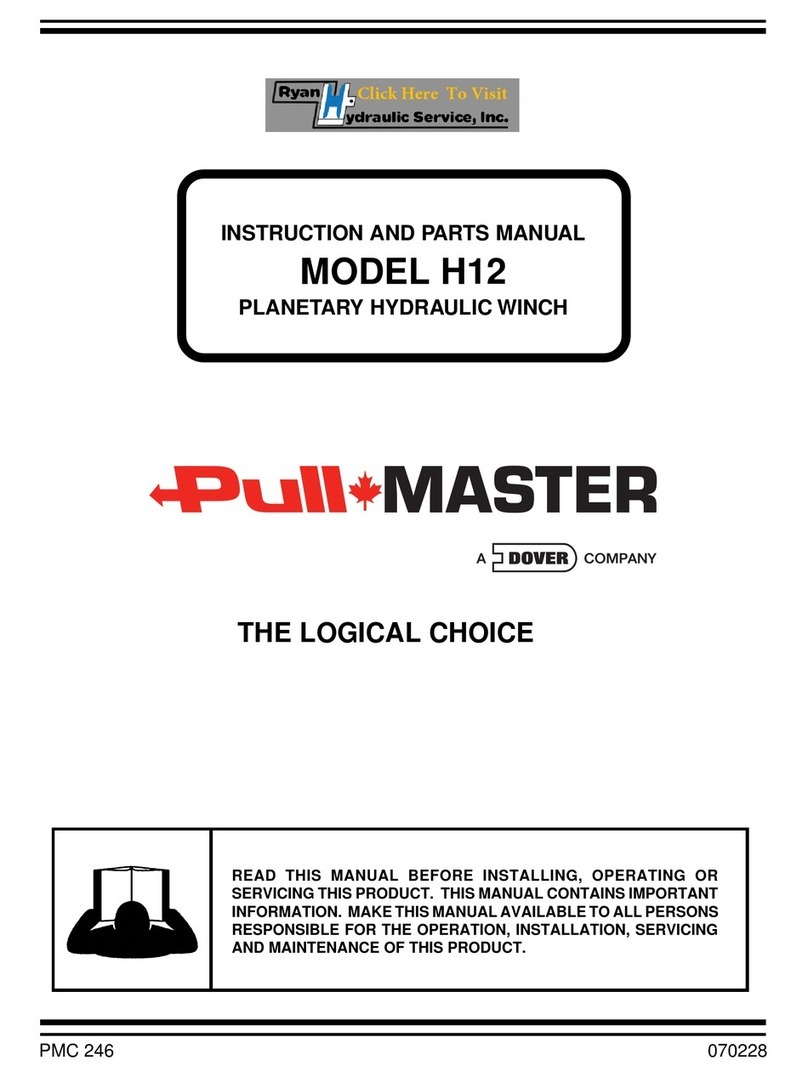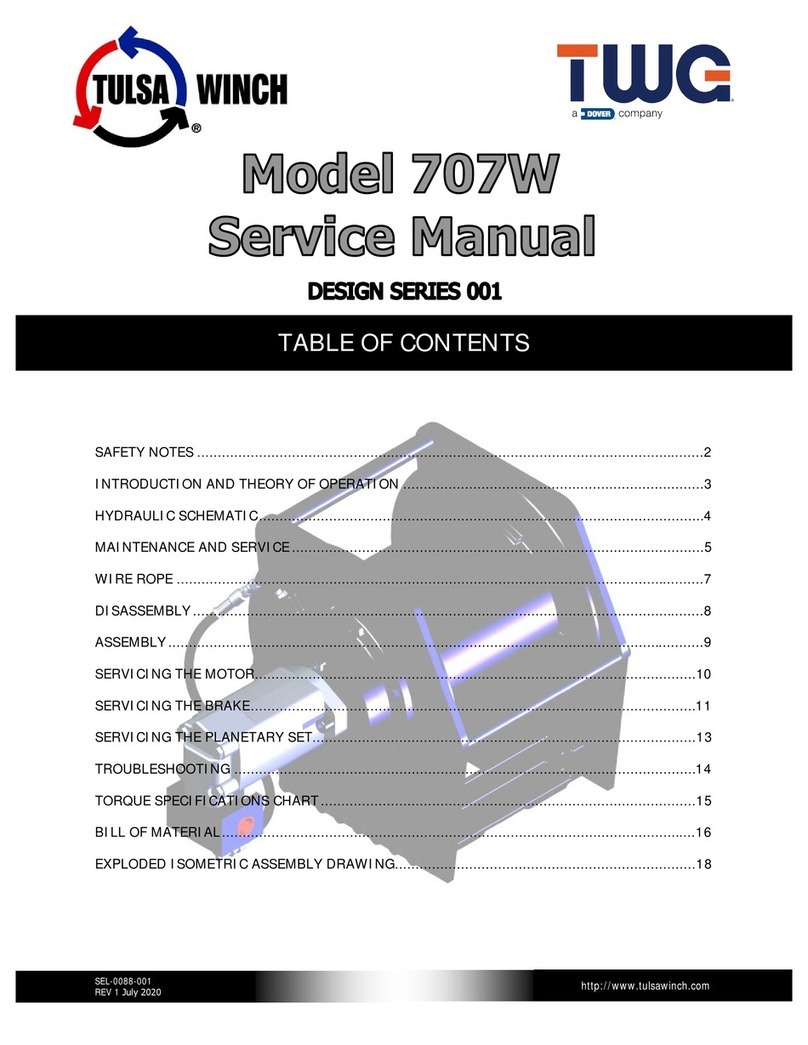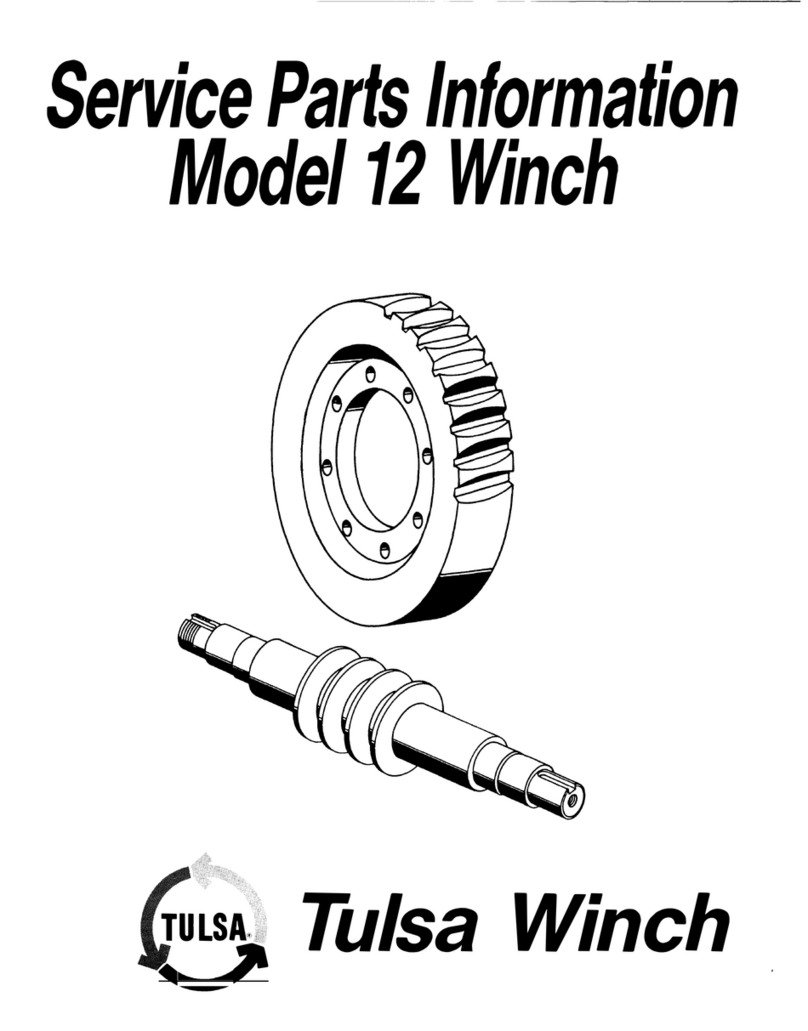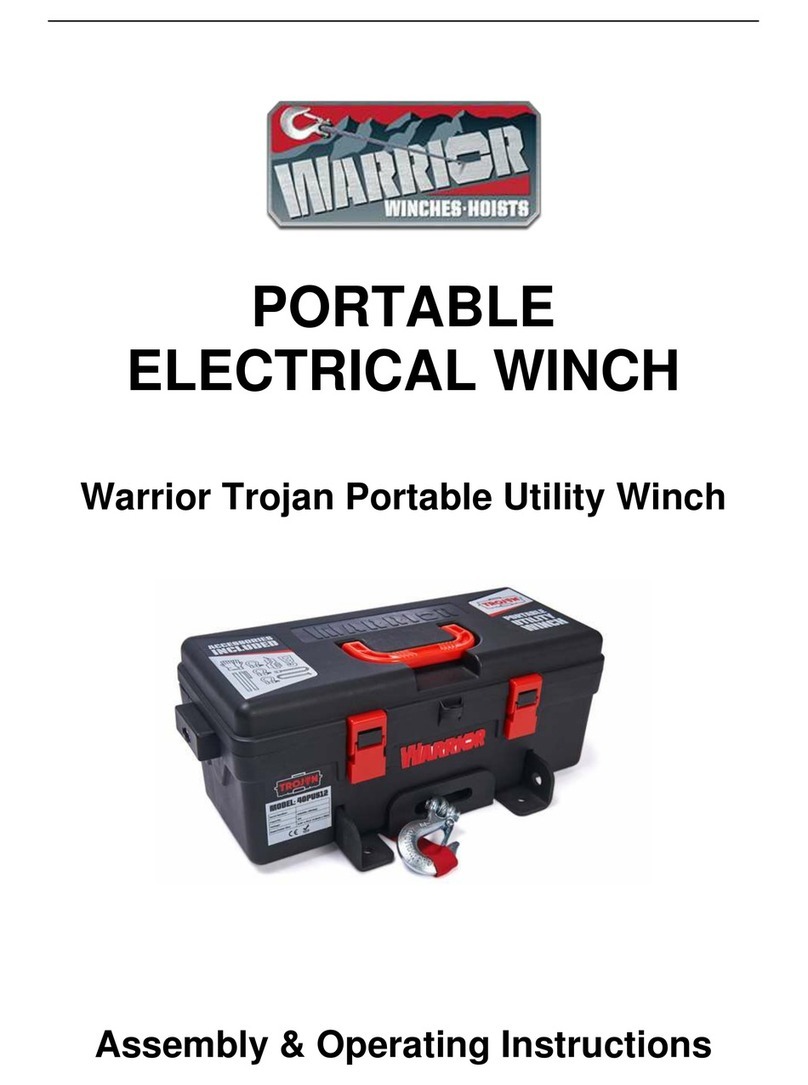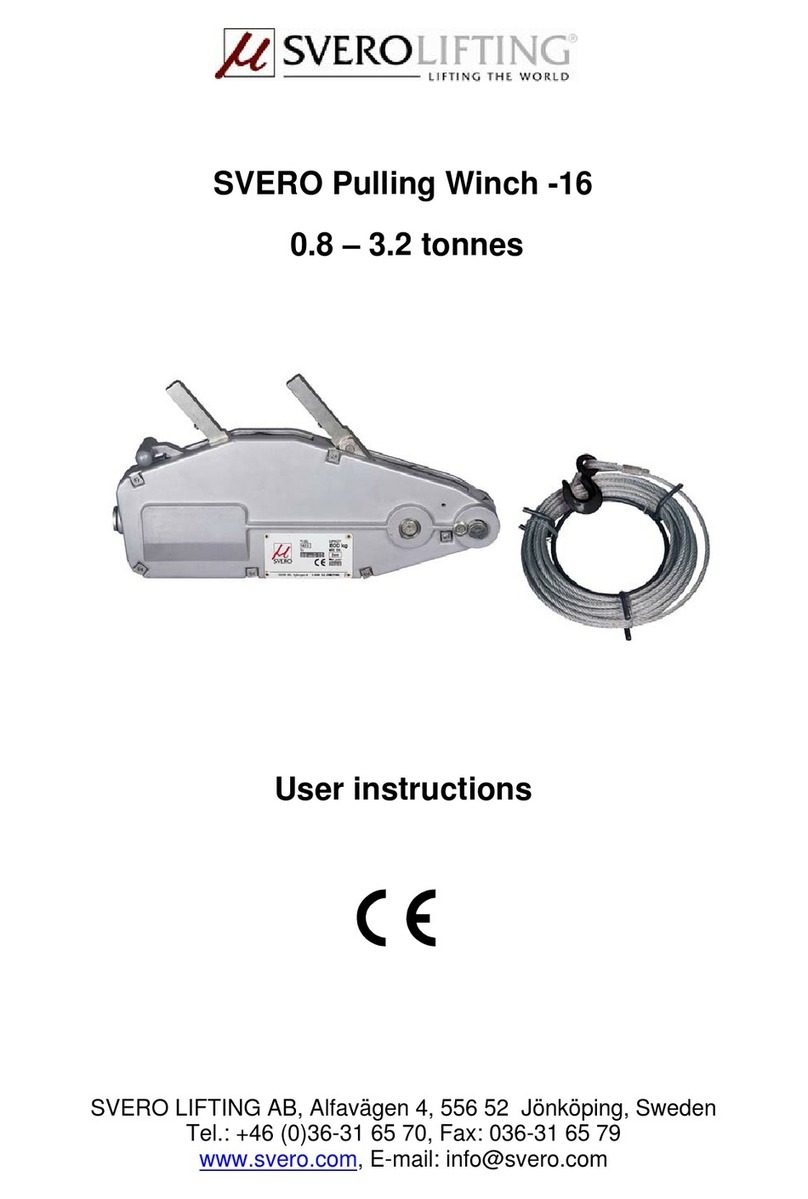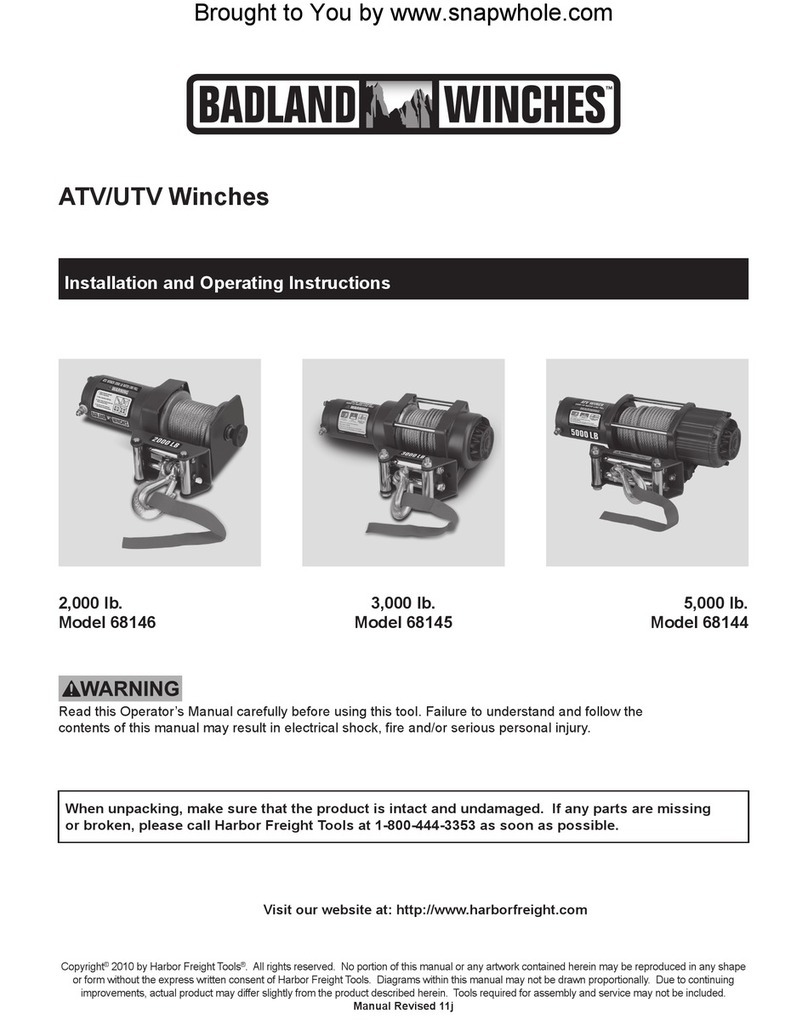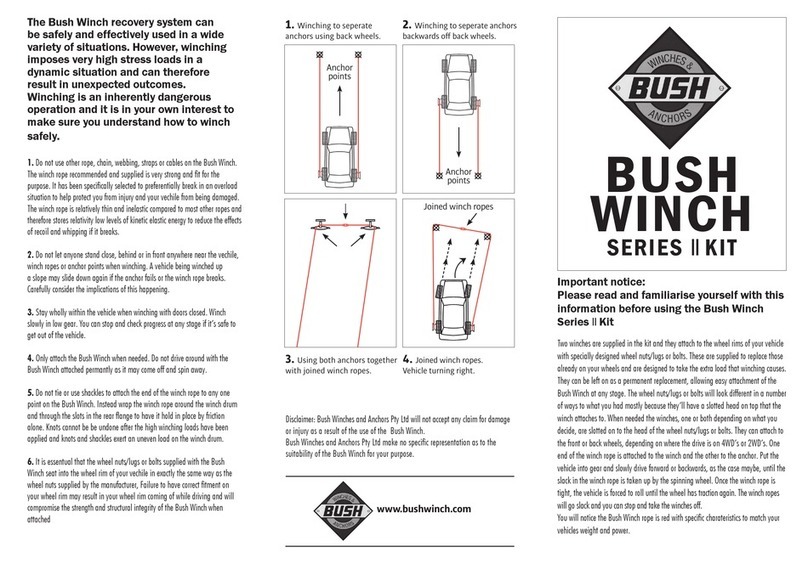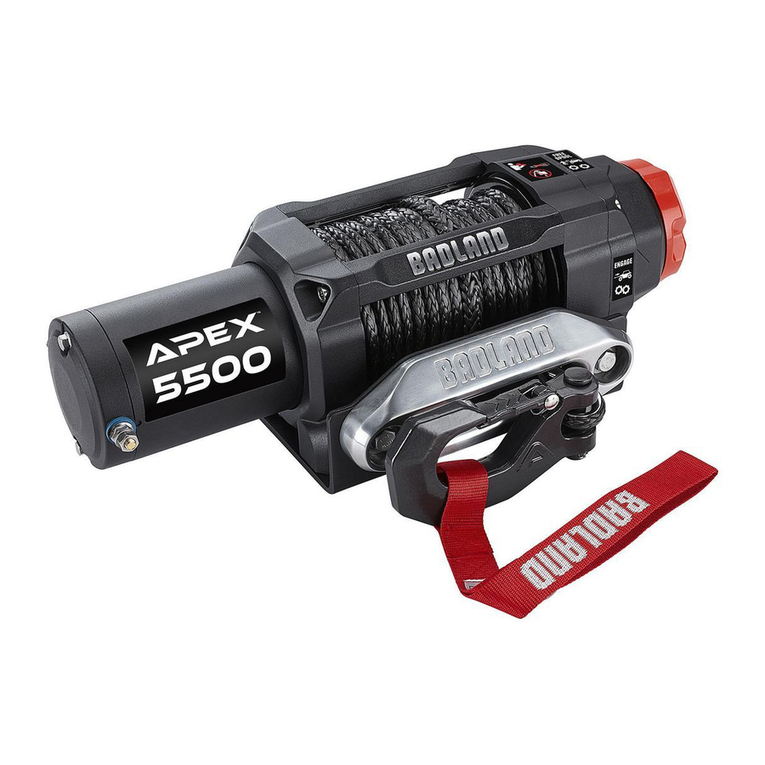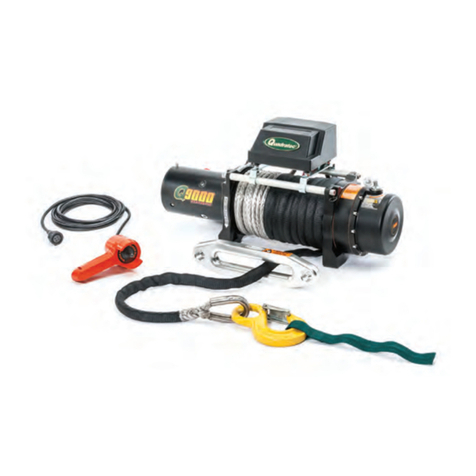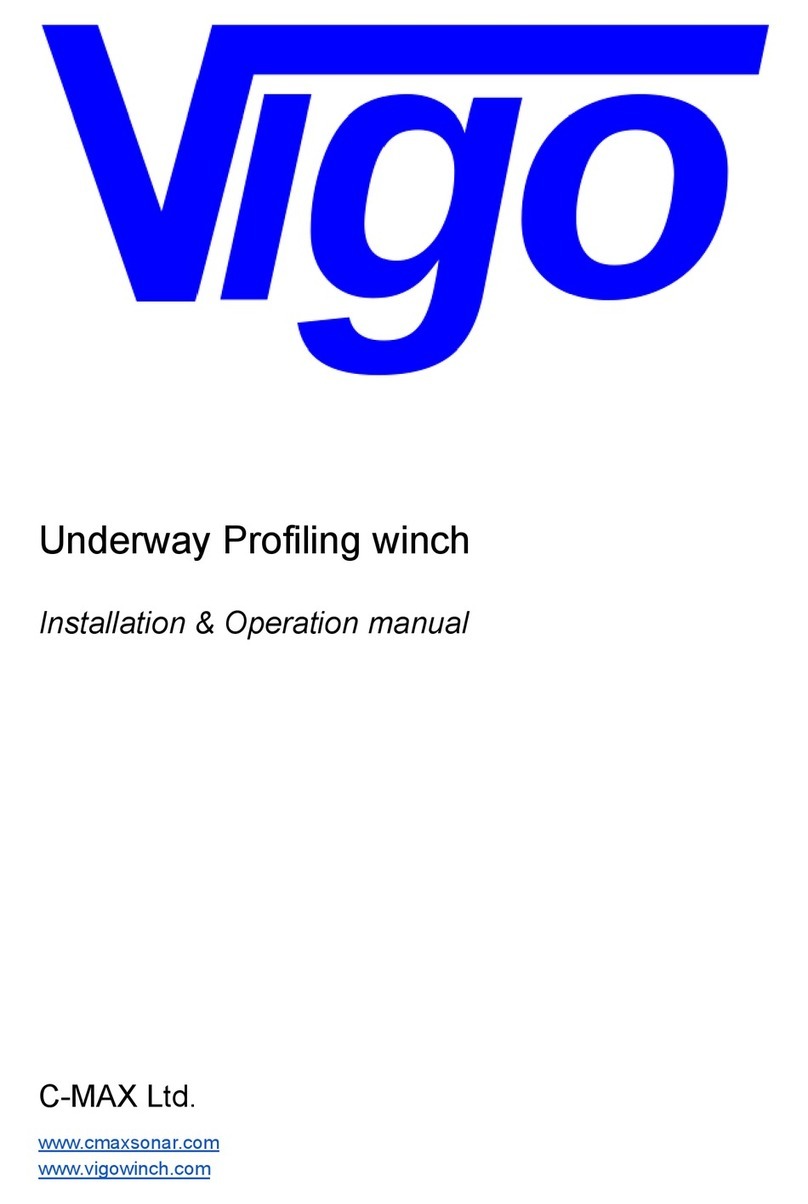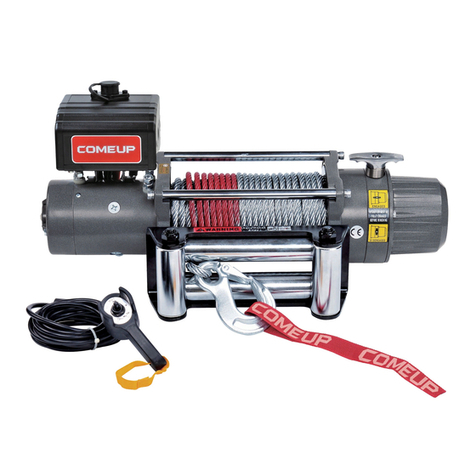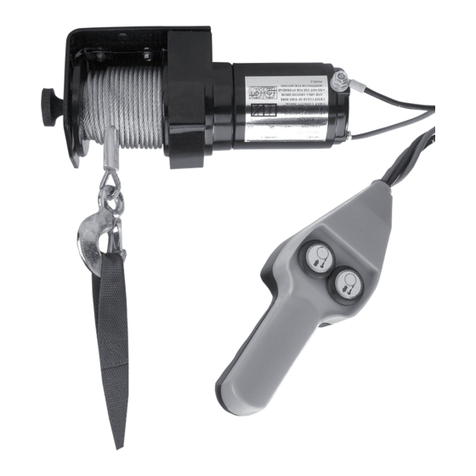
TABLE OF CONTENTS
22
9.6. ASSEMBLY DRAWING ..................................................... 22
9.5. INSTALLATION DRAWING .................................................. 22
9.4. MANUAL SUPPLEMENTS (IF ANY) ........................................... 22
9.3. SERVICE BULLETINS (IF ANY) .............................................. 22
9.2. FASTENER TORQUE CHART ................................................ 22
9.1. FACTORY LIMITED WARRANTY ............................................. 22
9. REFERENCE ................................................................. 21
8.6. BRAKE VIBRATES WHEN PAYING OUT A LOAD ............................... 21
8.5. BRAKE WILL NOT CONTROL OR STOP LOAD WHEN PAYING OUT ............... 20
8.4. BRAKE WILL NOT HOLD LOAD .............................................. 19
8.3. REVERSE SPEED IS SLOWER THAN FORWARD SPEED ........................ 19
8.2. CONSIDERABLE REDUCTION IN LINE SPEED ................................. 18
8.1. WINCH WILL NOT PULL LOAD .............................................. 18
8. TROUBLE SHOOTING ........................................................ 17
7.7. DRUM BEARINGS ADJUSTMENT ............................................ 16
7.6. DISASSEMBLY OF GEAR REDUCTIONS ...................................... 16
7.5. ASSEMBLY OF BRAKE ..................................................... 15
7.4. DISASSEMBLY OF BRAKE .................................................. 15
7.3. ASSEMBLY OF MOTOR .................................................... 14
7.2. DISASSEMBLY OF STANDARD MOTOR ...................................... 14
7.1. MOTOR ASSEMBLY REMOVAL .............................................. 14
7. DISASSEMBLY / ASSEMBLY .................................................. 13
6.4. MAINTENANCE SCHEDULE ................................................. 12
6.3. GEAR LUBRICATION SCHEDULE ............................................ 12
6.2. BLEEDING BRAKE SYSTEM ................................................ 12
6.1. PREVENTIVE MAINTENANCE ............................................... 12
6. SERVICE AND GENERAL MAINTENANCE ...................................... 10
5.1. CABLE FERRULE INSTALLATION ............................................ 9
5. START-UP PROCEDURE ....................................................... 8
4.7. PAY OUT APPLICATIONS .................................................... 7
4.6. HYDRAULIC CIRCUIT ....................................................... 6
4.5. HYDRAULIC OILS .......................................................... 6
4.4. FILTER .................................................................... 6
4.3. HOSES .................................................................... 6
4.2. CONTROL VALVE .......................................................... 6
4.1. PUMP ..................................................................... 6
4. HYDRAULIC COMPONENTS .................................................... 5
3.2. STORAGE ................................................................. 4
3.1. LUBRICATION ............................................................. 3
3. INSTALLATION ................................................................ 2
2. THEORY OF WINCH OPERATION ............................................... 1
1.1. WINCH SPECIFICATIONS .................................................... 1
1. INTRODUCTION ...............................................................
LANTEC Product Support - Installation and Maintenance Manual

